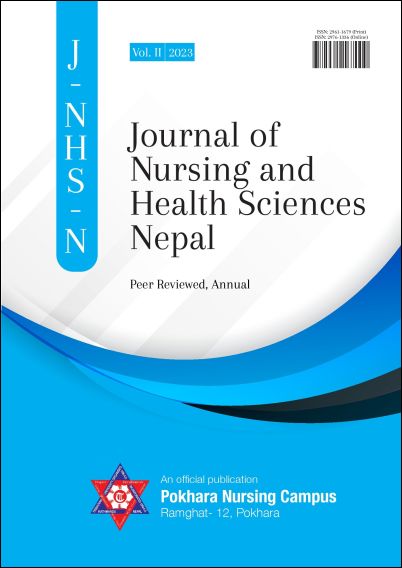Stress and Coping among Nursing Students
DOI:
https://doi.org/10.3126/jnhsn.v2i1.66460Keywords:
Stress, coping, student, nursingAbstract
Introduction: Stress is common among nursing students and it can affect their academic and clinical performance. Nursing students must cope with various stressors as inability to cope up with the stressors may lead to many physical and psychological health issues. This study was conducted to assess the stress and coping strategies used by bachelor level nursing students in Pokhara.
Methods: A descriptive cross-sectional study was conducted on 159 bachelor-level nursing students. A structured questionnaire Perceived Stress Scale and Coping Behaviour Inventory was adopted for the data collection. Informed written consent was taken from the study participants. Both descriptive (percentage, mean, and standard deviation) and inferential statistics (chi-Square and correlation) were calculated.
Results: This study found that 52.2% of respondents had a high and 47.8% had a moderate level of stress. The most common stressors was assignment and workload and the most commonly used coping strategy was problem-solving. There was a significant statistical association between stress level, economic status, and grading point average (GPA). A low degree of positive correlation between stress and coping strategies (r = 0.254, p = 0.001) and a moderately positive correlation between all PSS subscales and avoidance were found.
Conclusions: This study concluded that severe level of stress was found among bachelor-level nursing students and the “assignment and workload” was the most common stressor. The most frequently used coping strategy by nursing students was problem solving. The study findings also revealed a low degree of positive correlation between stress and coping strategies used by nursing students.
Downloads
Downloads
Published
How to Cite
Issue
Section
License
Copyright (c) 2023 The Author(s)

This work is licensed under a Creative Commons Attribution 4.0 International License.
This license enables reusers to distribute, remix, adapt, and build upon the material in any medium or format, so long as attribution is given to the creator. The license allows for commercial use.




